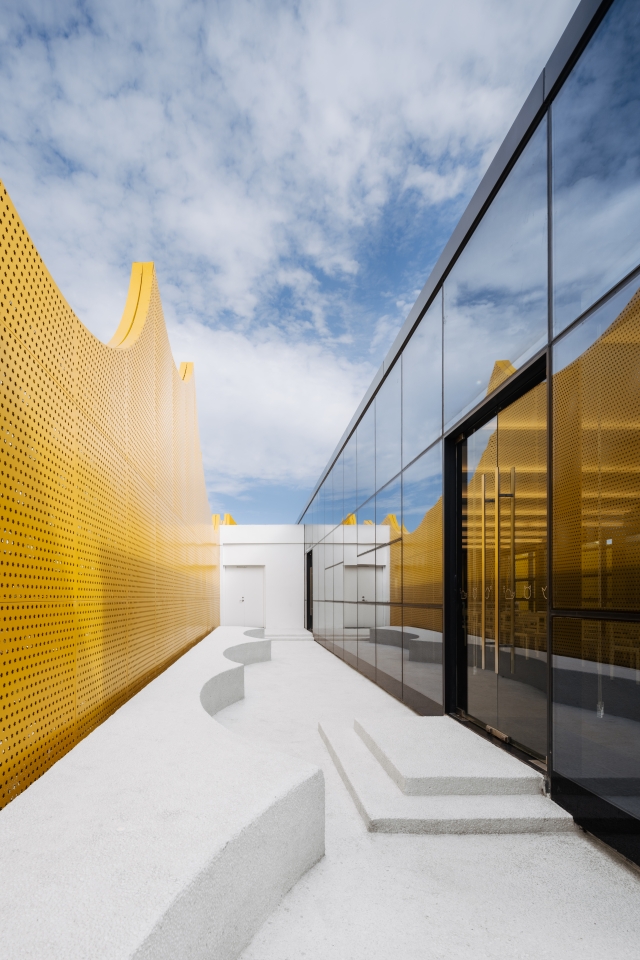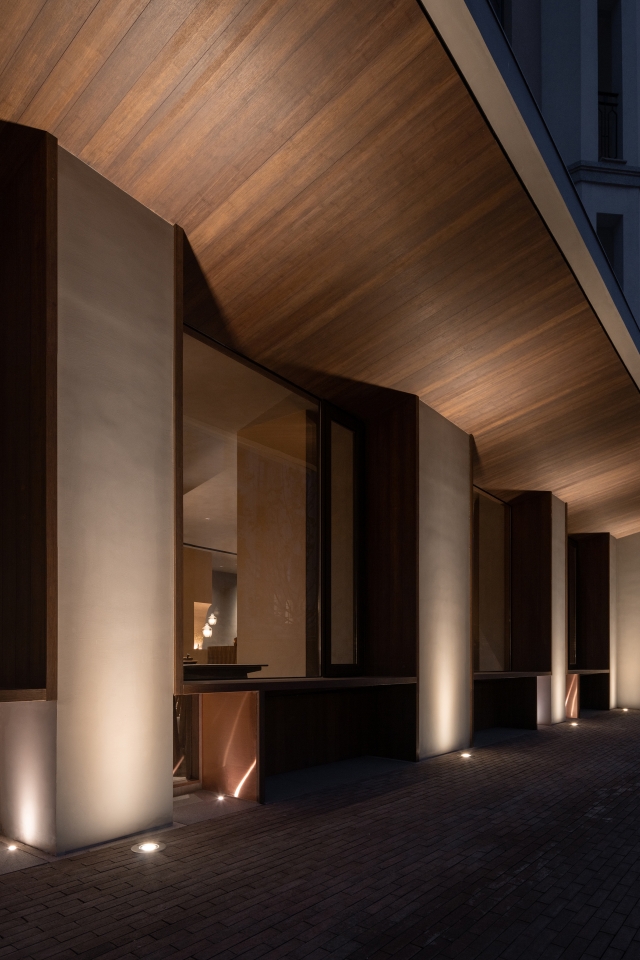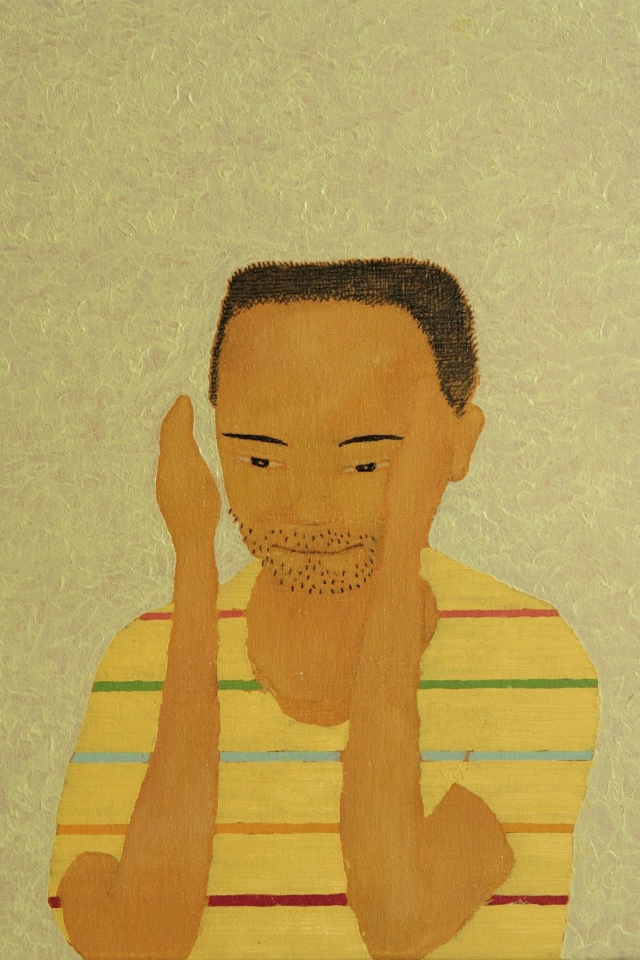The majestic site overlooks the Guguan Valley carved out by the Dajia River and the picturesque hot spa town of Guguan, Taiwan's famed hot spring area. A one to two hour panoramic drive from Taichung City takes you through Taiwan's picturesque landscapes with stunning mountains covered in lush greenery, tea plantations carpeting the hillside in vibrant shades of green and dense forests make up the breathtaking backdrop for the journey through valleys carved by glistening rivers.

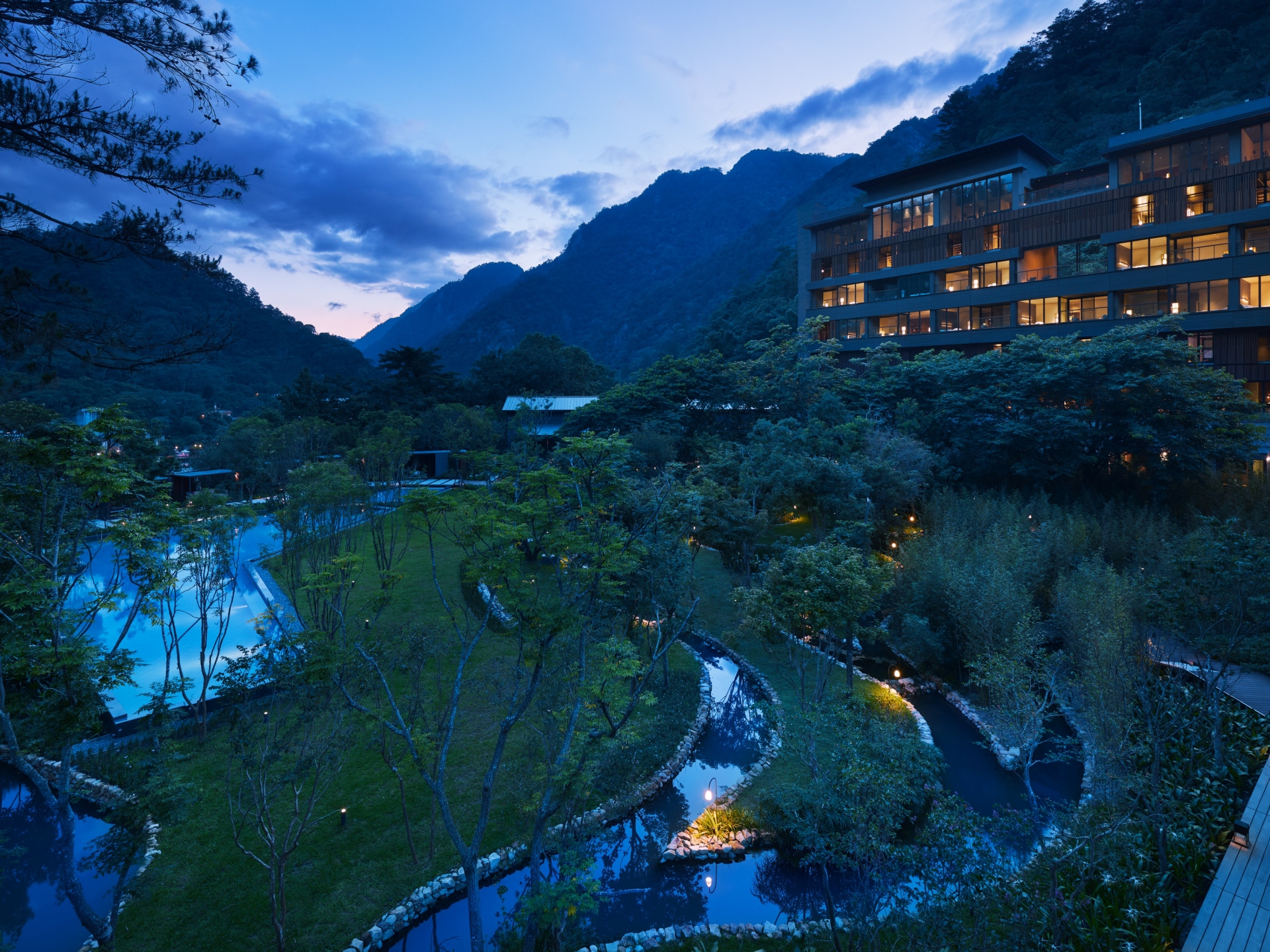
Driving through Guguan town, we see Hoshinoya perched high above. The road winds up to the approach of Hoshinoya Guguan along a driveway lined with an ethereal bamboo forest to a contemporary building that melds beautifully into the natural landscape. As we step outside, the fresh mountain air envelops us in a peaceful ambience, and a sense of otherworldly tranquillity instils an immediate feeling of calm. Hoshinoya Guguan is breathtaking. After a warm welcome, we enter the expansive contemporary lobby with its monumental wooden reception desk and lofty gallery-like aesthetic. The lobby leads to the main central lounge, where expressive Taiwanese and Japanese artworks (curated by Tokyo-based Art Front Gallery) further deliver a feeling of being inside an art gallery. The welcoming and exceptionally spacious mellow tonal lounge is lined with books on art, nature and architecture to browse at leisure while sipping gorgeous local teas and tasty local snacks. Taiwan is famed for its fine teas, and in Japanese culture, drinking tea is not just "drinking tea" but more a showcase of Japanese culture and aesthetics. Floor-to-ceiling plate glass walls and doors bring the beautiful natural surroundings inside while allowing a subtle interplay of light and shadow as the sun filters through the leaves of the wooded glen - the shadows are deliberate, a phenomenon known as komorebi where dappled light permeates the room, radiating a series of magical dancing light patterns across the rooms.
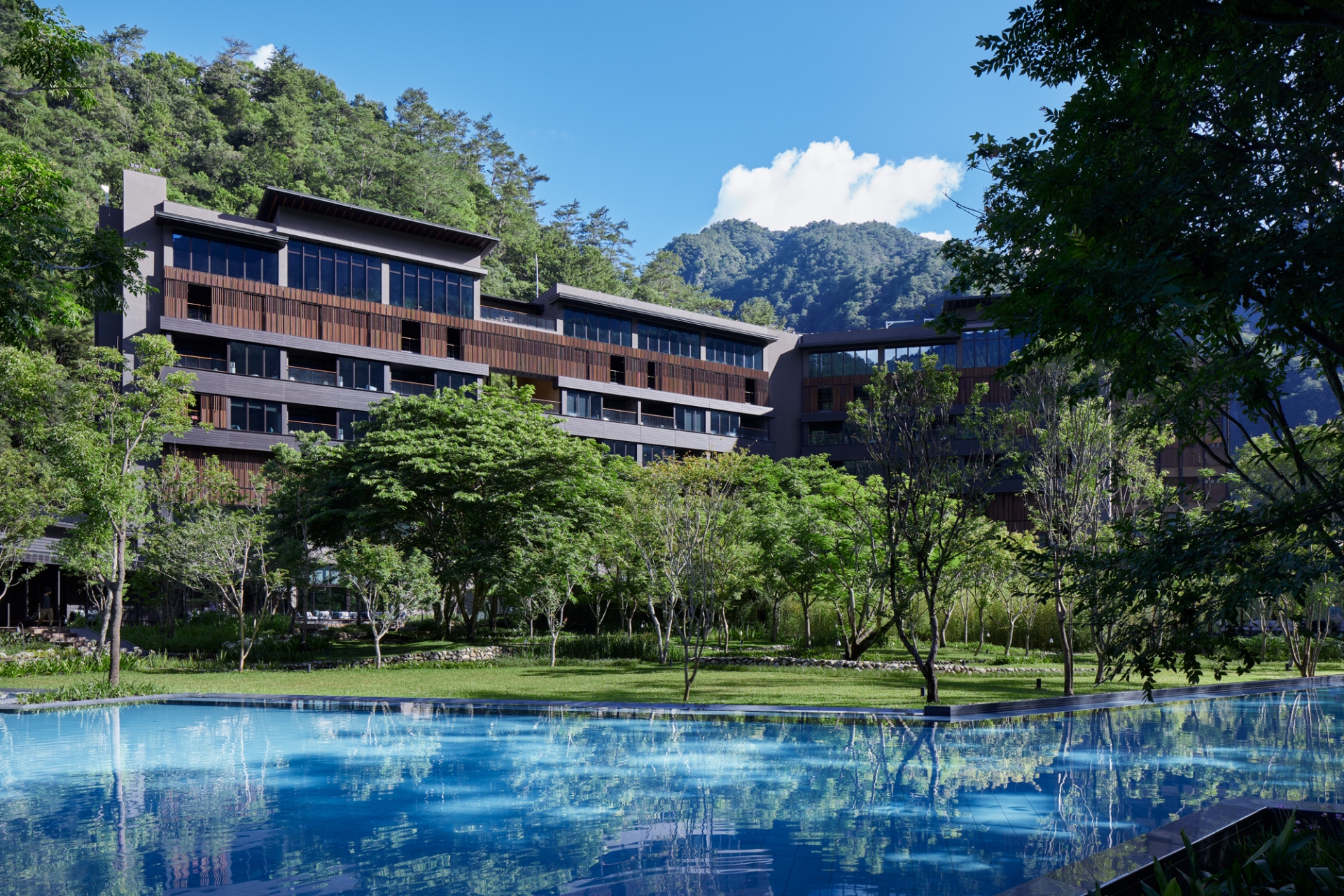
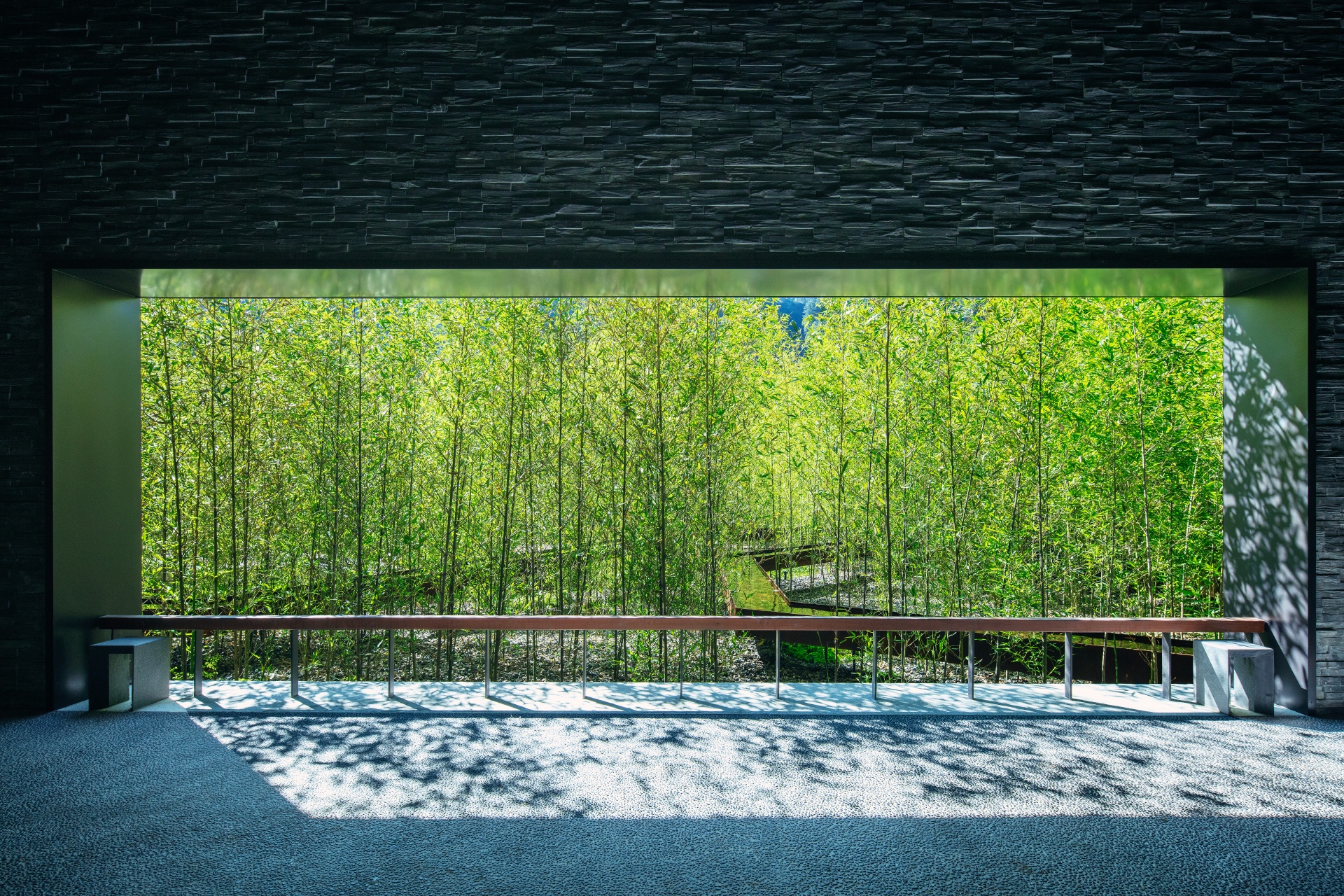
SATOYAMA AND OMOTENASHI
Hoshinoya Guguan seamlessly integrates traditional Japanese design with the raw beauty of its surroundings, along with incredible service. Japanese is renowned for its omotenashi. Omotenashi is the Japanese concept of welcoming and caring for guests with warmth, graciousness, attentiveness, anticipating their needs, wholehearted hospitality, and selfless service without waiting for them to ask or expecting anything in return. Hoshinoya Guguan, as are all the Hoshinoya hotels, are inspired by traditional Japanese design principles of simplicity and minimalism. Working with renowned architect Rie Azuma, President of Azuma Architects & Associates, the architecture and interiors at the resort are inspired by the concept of "satoyama," meaning harmony between nature and human habitation, in which the serene atmosphere and captivating views create a sense of tranquillity, inviting guests to unwind and reconnect with the natural world. Azuma fully exploits the panoramic vista by designing the resort around and overlooking the captivating gardens, the sprawling spring water pool and the magnificent mountain views. The facade of the buildings resembles the dynamic interplay of dips and protrusions in the cluster of urban buildings commonly found in Taiwan's cities and reflects the contours and hues of the surrounding landscape. Azuma's architecture blends Japanese aesthetics with Taiwan's cultural history - notably the native population of 14 aboriginal tribes and Atayal peoples local to the Guguan and Nantou regions. Layered stone pays homage to the indigenous Taiwanese Atayal people's architecture, who used stone slabs for their homes. “One of the most appealing qualities of Taiwanese architecture is its liveliness”, says Azima, “This is at play in the guest room buildings, where the facade dips in and juts out dynamically, mimicking a cluster of buildings – a common sight in Taiwan's cities. The reception, meanwhile, resembles a contemporary art museum, with open space to transport guests into a new, different world.”

THE WATER GARDEN
Hoshinoya Guguan covers a vast footprint; however, Azuma has co-created a series of transitions between indoor and outdoor spaces that make it feel enveloping and intimate. The expansive 'Water Garden' is designed by Japanese landscape designer Hiroki Hasegawa - Hoshinoya's long-term collaborator who has led the planning of each Hoshino Resorts property's gardens. The result here in Guguan is a mesmerising balance of nature and nurture. Delicate flower-lined canals guide the water's pathway and amplify its soothing sounds as it winds through the verdant trees. At the heart of Hoshinoya Guguan lies its renowned hot springs, which draw their mineral-rich waters from the region's geothermal sources. The gentle, naturally effervescent, mildly alkaline waters rejuvenate your skin while calming your mind. The aroma of the surrounding cypress trees fills the bathhouse as you enjoy the therapeutic benefits of the soothing water. The expansive outdoor spring water swimming pool is lined with ten gazebo pavilions, offering shade and a place to bask in the gentle breezes drifting from the surrounding groves. Water permeates every aspect of the resort; whether dining, relaxing at the spa, soaking in the hot springs, enjoying the pool, or perusing the library, the water garden's tranquillity is always within easy reach.
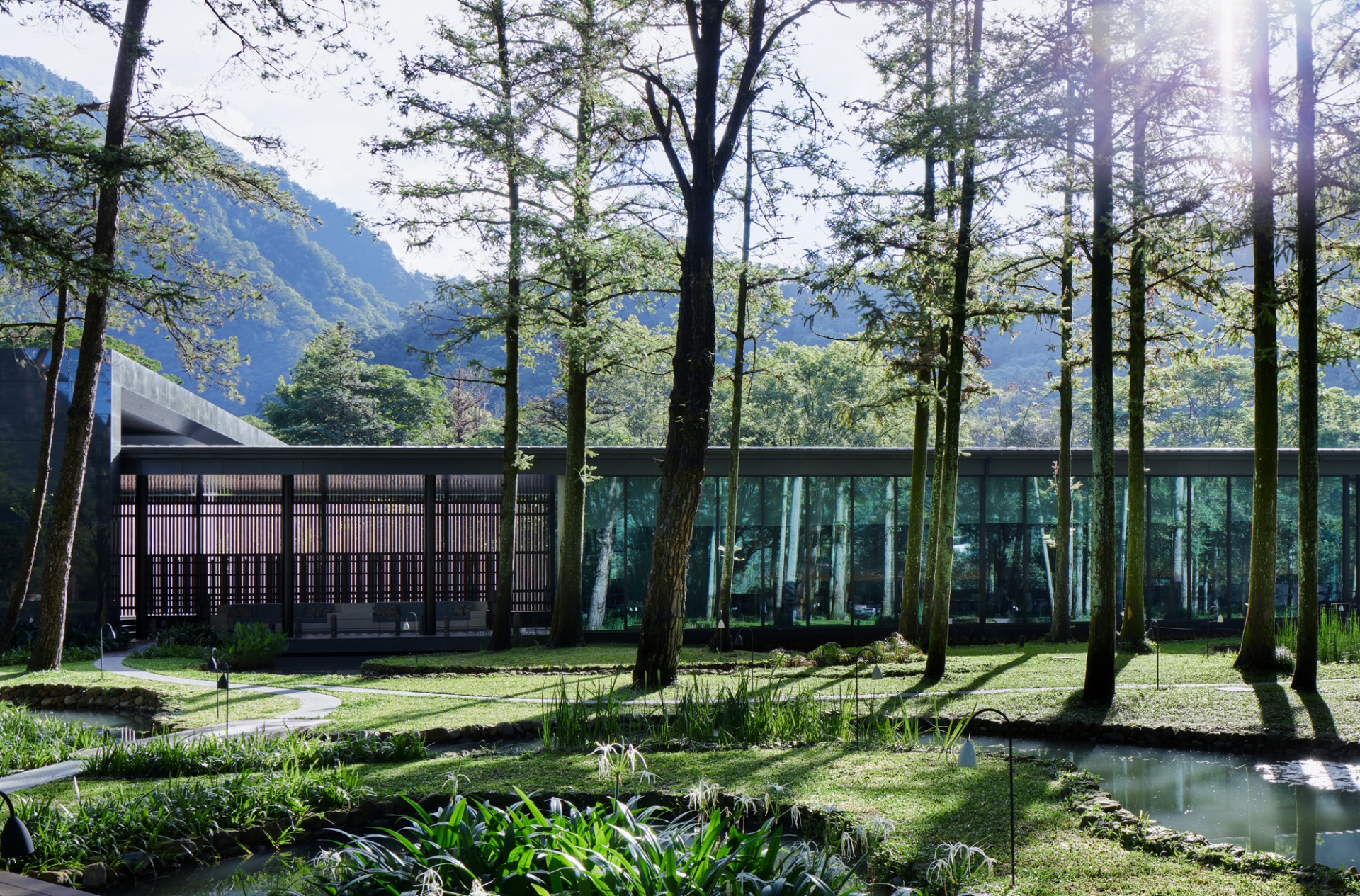
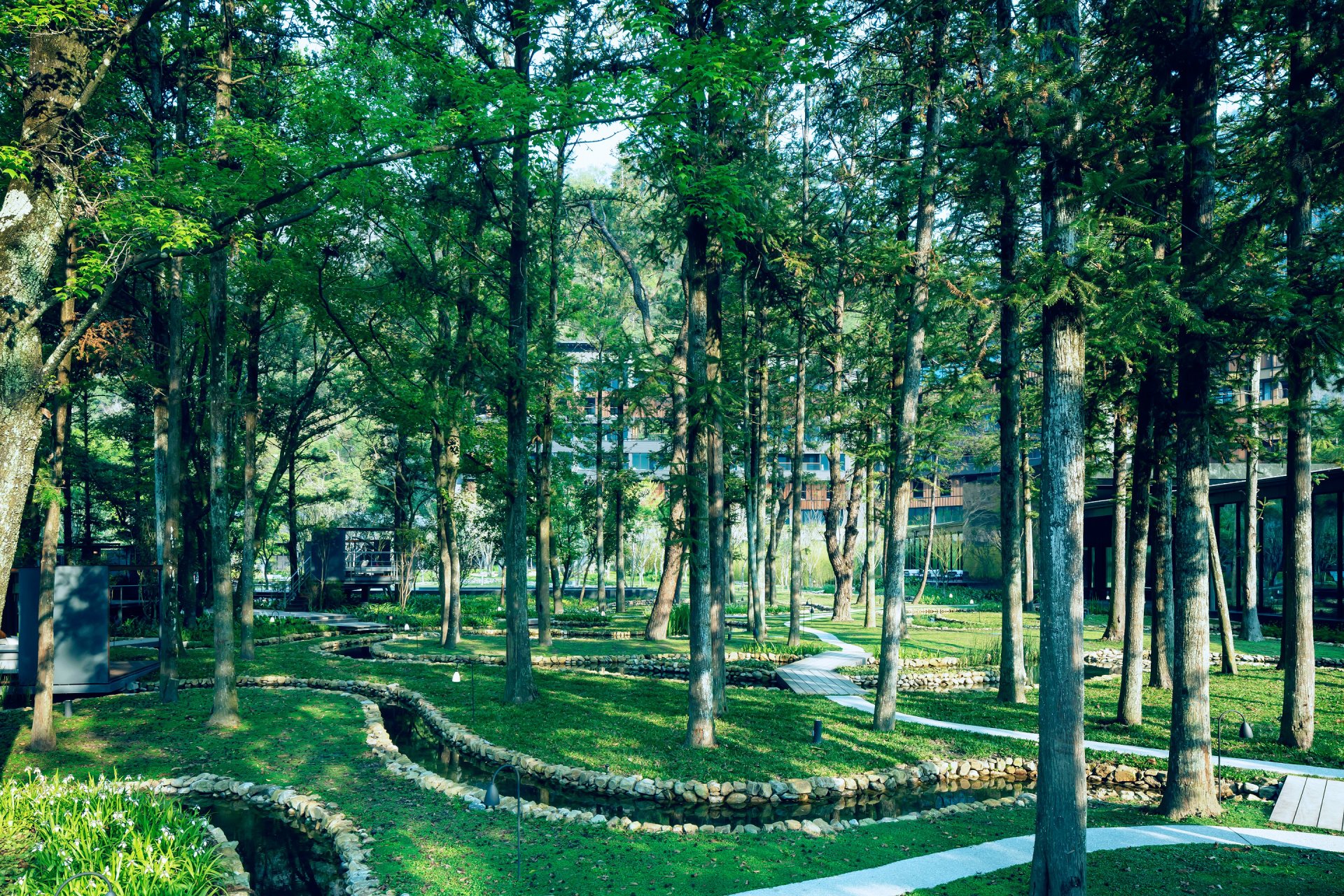


THE ROOMS
There are a total of 49 guest rooms in a separate building. A rather sleek glass and wooden facade fits harmoniously within the landscape situated across the garden, pool and the main hotel lobby, lounge/library and dining room, which is connected to the main building to one side by a Corten steel walkway while the other via a stroll through the gardens and waterways. The contemporary, refined rooms have an understated palette and minimal low-level furniture in muted tones, with natural timbers that are incredibly cocooning and relaxing - the concept of "richness in emptiness", known as Mikayla, is repeated everywhere. The majority of the rooms are configured in a duplex, split-level layout, with the living and sleeping quarters on one level with full-height glazing, unobstructed panoramic views of the mountains and the ever-changing views throughout the day, from the ethereal beauty of morning mists to the mesmerising nighttime spectacle of illuminated lantern-inspired lamps, moonlight and stars with a floating staircase to an entire bathing floor, including an onsen tub with continually flowing hot spring water on a covered balcony with wooden louvre shutters for privacy while allowing staggering mountain views. Each of the five room types, Shui, Sen, Shan, Feng and Yue, features a private hot spring onsen bath, which is rare and unique.
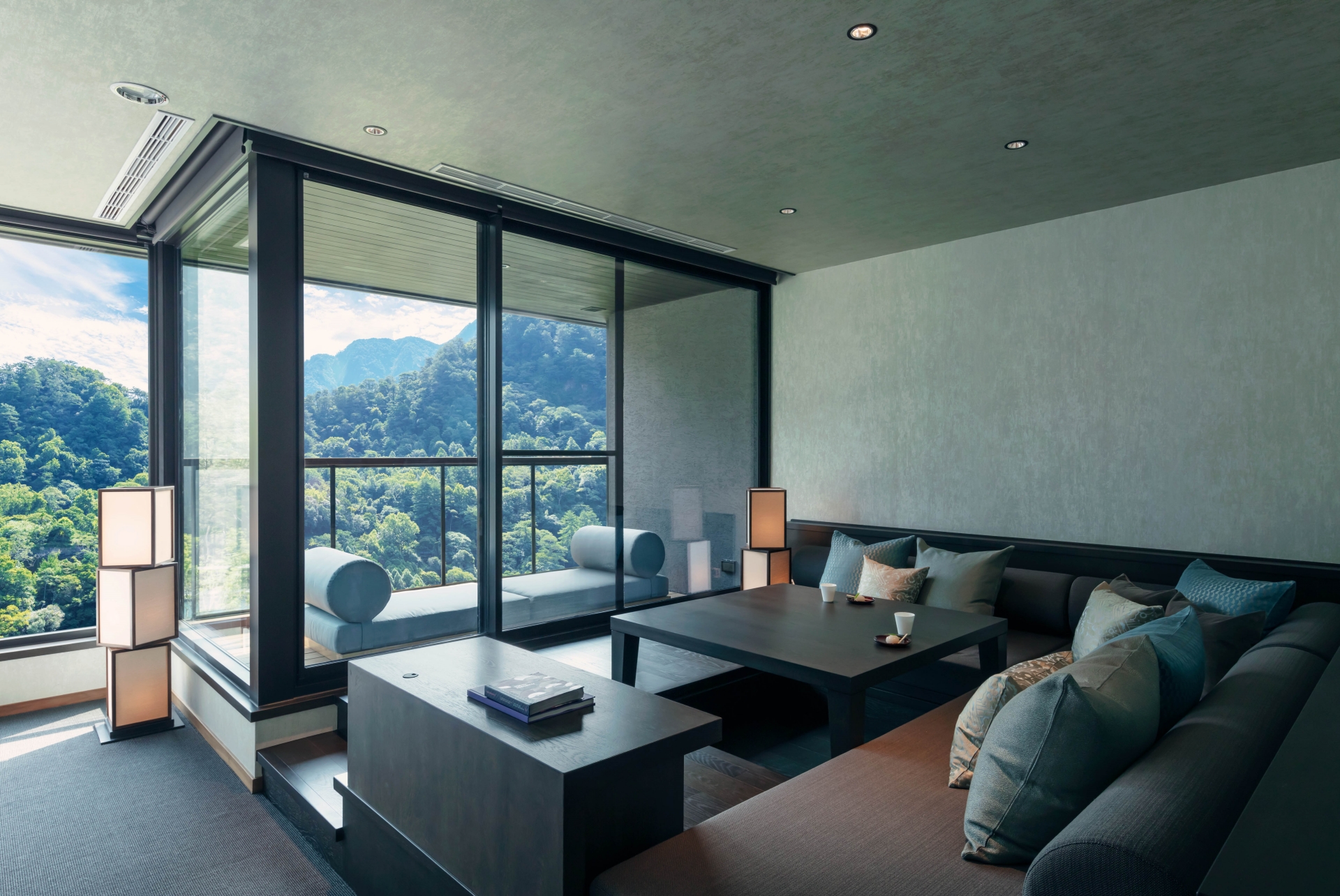
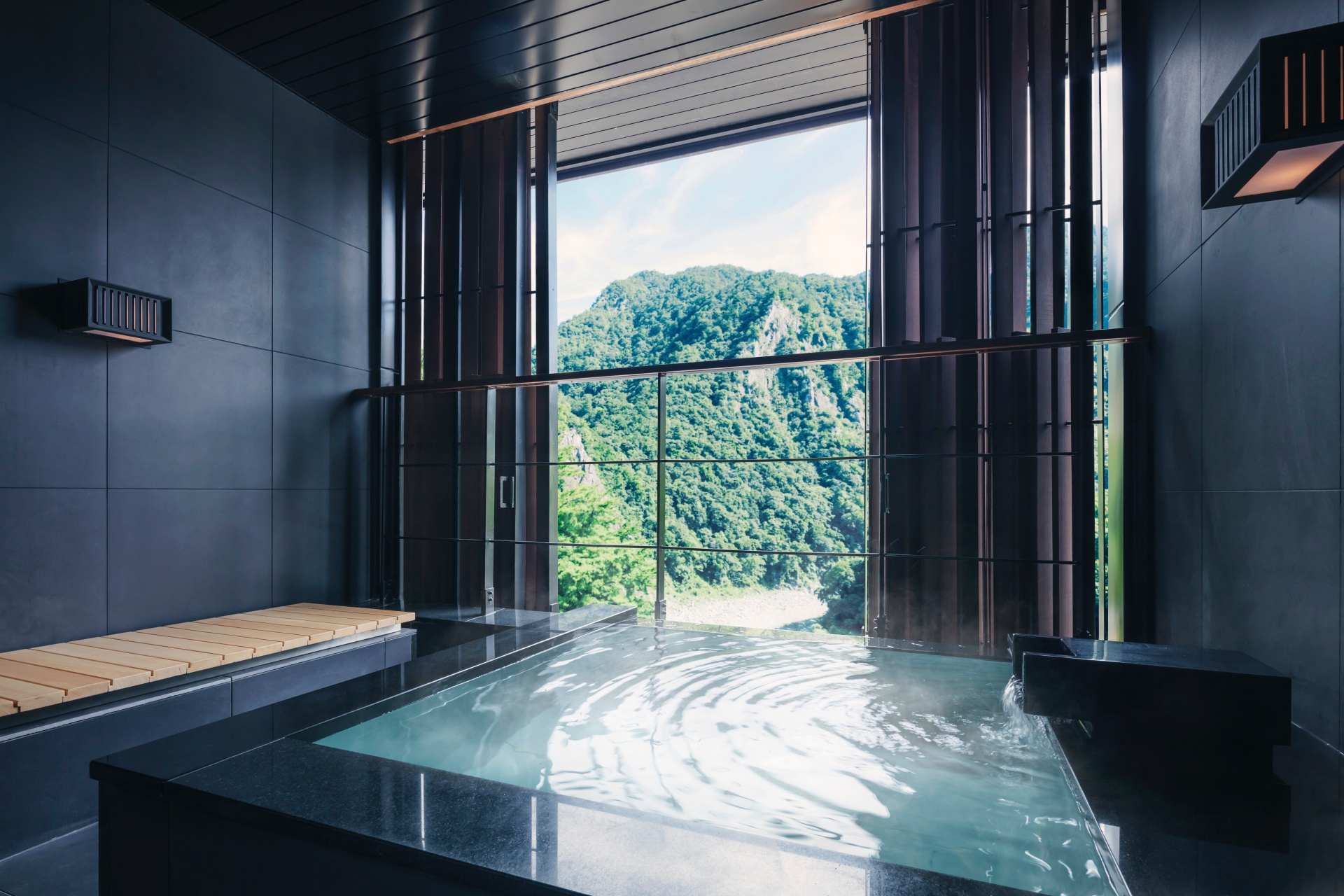


THE HISTORY OF GUGUAN HOT SPRINGS
Despite Japan's image of being the land of onsen bathing, the history of hot spring resorts in Guguan goes back to ancient times when the local indigenous people, mostly the Atayal tribe, first discovered the healing and relaxing properties of the natural hot springs in the area. Interestingly, there is no hot spring resort in Japan of comparable capacity with access to such a large volume of hot spring water as in Guguan. During the Japanese colonial period (1895-1945), the Japanese recognised the potential of Guguan's hot springs, developing the area into a recreational destination and establishing the foundation for the hot spring resort industry in Guguan. After World War II, Taiwan's tourism industry flourished, and Guguan continued attracting local and international visitors looking to experience its healing hot springs.
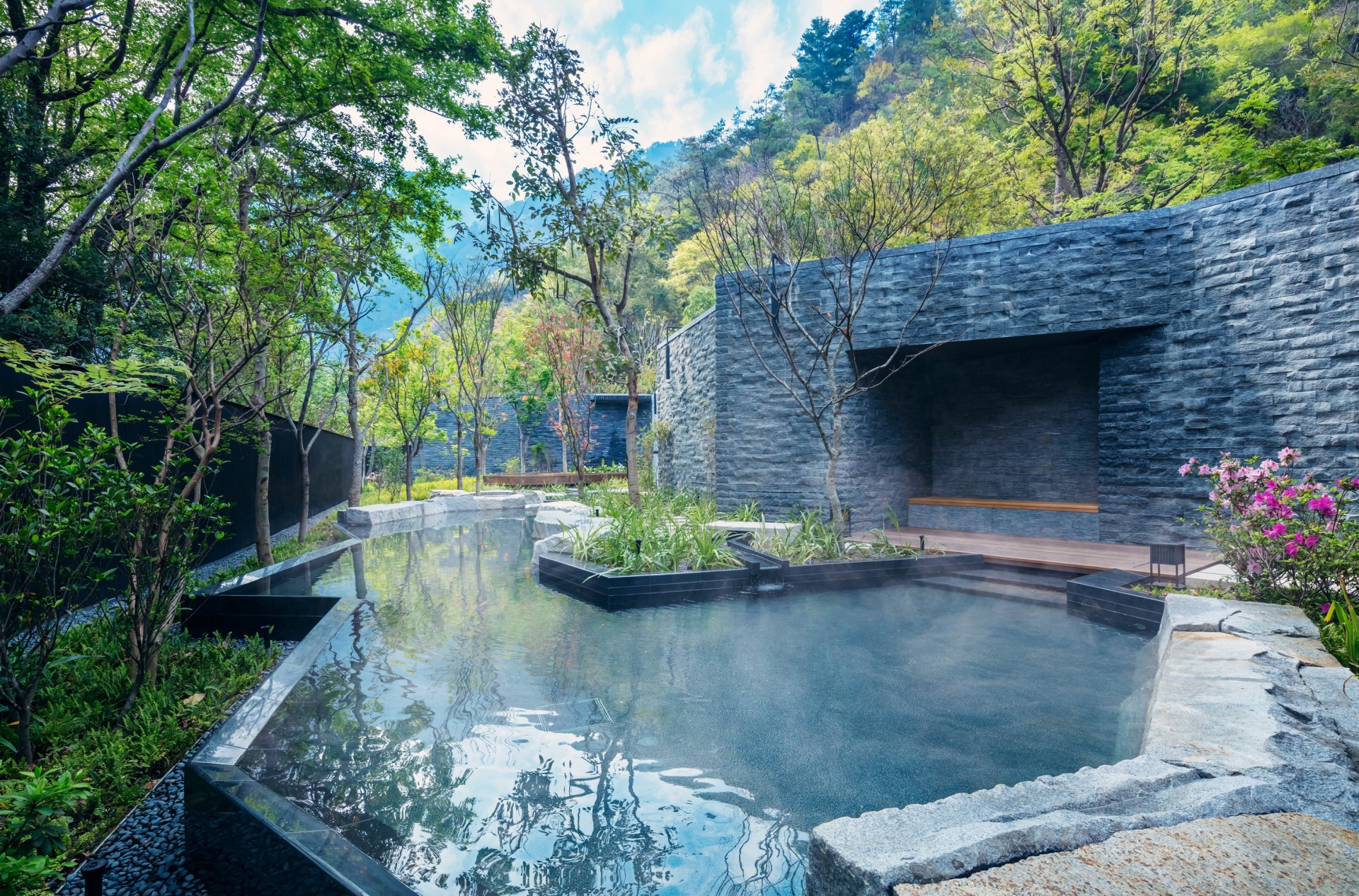
DINING
The dining menu showcases a fusion of Japanese and Taiwanese culinary perspectives. Kaiseki cuisine plays a significant role in Japanese onsen culture. Central to the essence of a kaiseki dining experience are top-quality ingredients, precise culinary skills, and exquisite tableware that enhances the presentation of each dish. Guests can be seated at conventional tables, Japanese-style low tables with leg wells, or in private booths. Only breakfasts have a Western option.
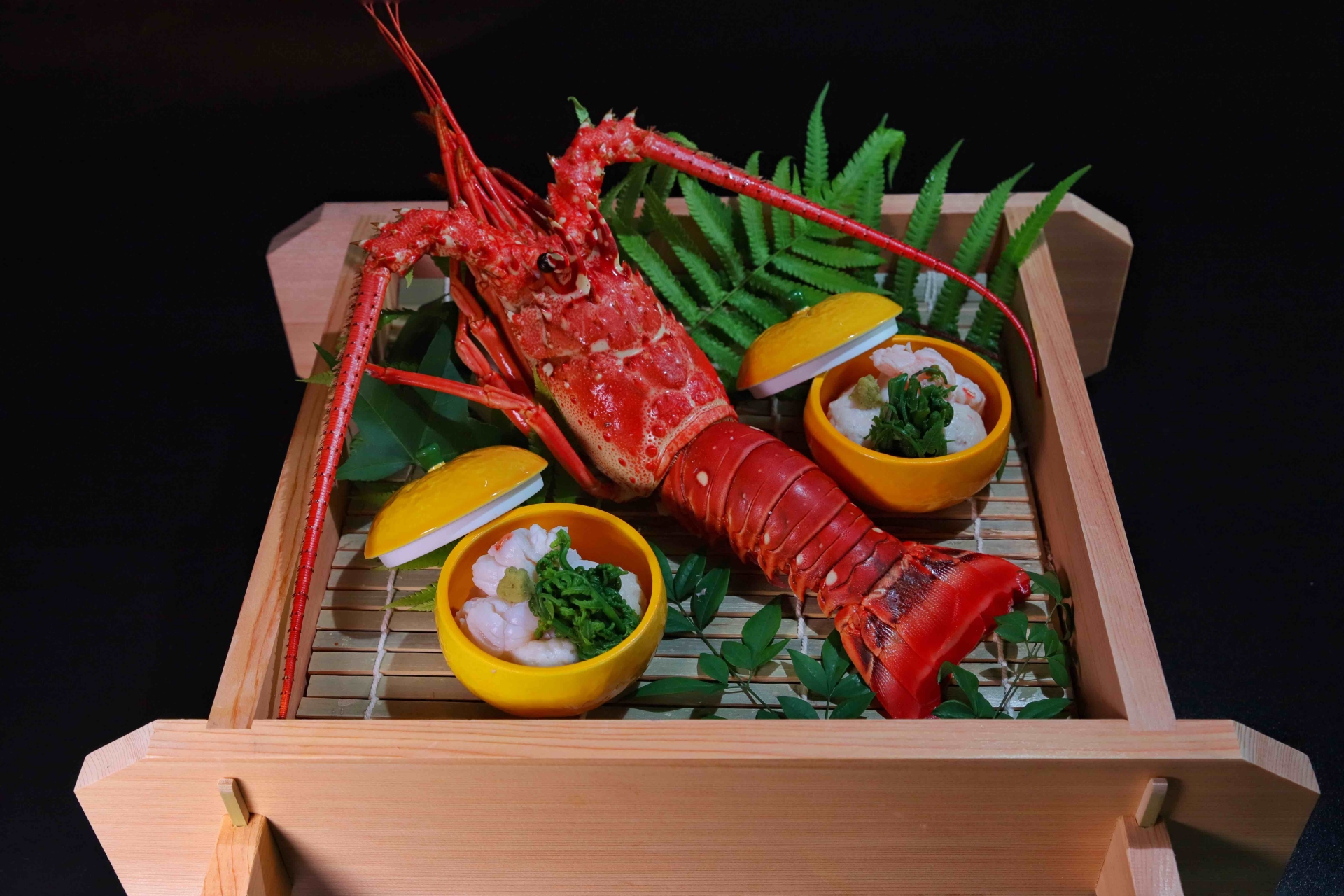

EXPERIENCES
There are curated workshops, including early morning deep breathing and stretching in the woods and in the evening under the night stars with the evening breeze to awaken your senses and slowly relax your body and mind. You can take a guided morning walk through Guguan to discover its culture and history. A garden tour provides a complete insight into the garden and its flora, from the Umbrella Plant and its thin grasses used by native Amis people for weaving to witnessing the ancient carvings on the Taiwan Red Two-Leaf Pine trees with markings made by the Atayal indigenous peoples who source its pine oil, and the fascinating life span of the cicada. You can also experience an introduction to the Atayal people's traditional textile weaving culture and techniques using a desktop loom to make a traditional Atayal weaving, or carve a harmonica from bamboo, and learn how to play the ancient melodies of the Atayal people. Every activity here is thoughtfully curated to ensure your complete relaxation.
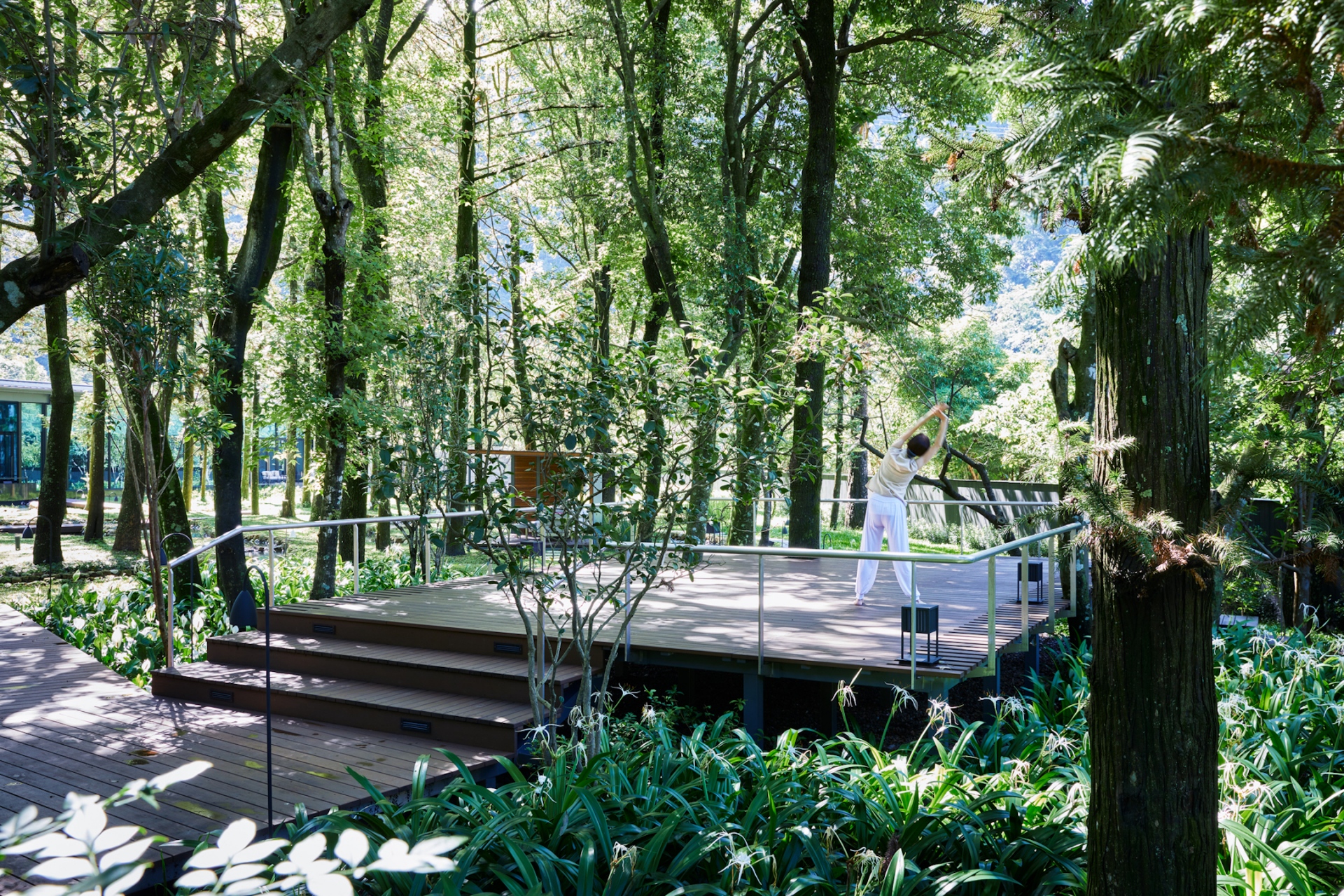
Hoshinoya Guguan is a destination that immerses you in the scenic wonders of Taiwan's countryside, offering a sensory feast of the natural beauty of the majestic mountains, serene valleys, lush forests, and the therapeutic allure of hot springs while witnessing the seasonal changes, such as cherry blossoms in spring or vibrant autumn foliage in fall, that add bursts of colour to an already captivating landscape.
SUSTAINABLE TOURISM WITH A FOCUS ON WELL-BEING AND SUSTAINABLE PRACTICES
The resort blends with the surrounding natural environment while minimising its impact on the ecosystem using local materials and energy-efficient designs to reduce its carbon footprint. The natural hot springs lessen the need for energy-intensive heating systems, and the resort sources local products to support the local economy while supporting community initiatives to benefit the local community and the environment.

Hoshinoya Guguan is not a mere hotel. It is an experience. Go and soak in every tiny detail.





